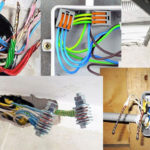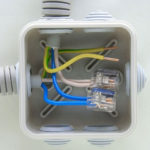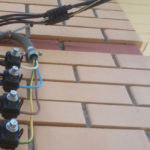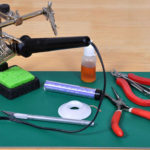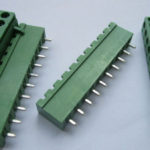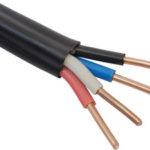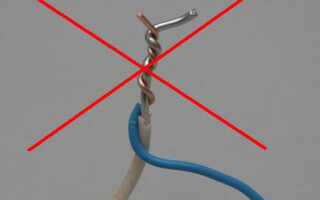Aluminum wiring is rarely used nowadays for laying electrical networks in houses and apartments. It needs to be replaced during repair work. However, it also happens that the work is done partially. In this case, the problem arises: how to connect copper and aluminum wires.
Contents
What problems may arise when connecting aluminum and copper
Answering the question of whether it is possible to connect copper with aluminum, it is necessary to remind that when performing stranding of copper and aluminum wires, the following problems arise:
- Reduced electrical conductivity. Aluminum is an active metal, in normal conditions it is covered with an oxide film that has low conductive qualities. Copper has no such property.
- Contact weakening. The buildup of a plaque makes contacts worse. Copper cores do not form such a film, so the metals are considered electrochemically incompatible.
- Fire hazard. When wondering how to connect aluminum wire to copper wire, one remembers that there is electrical contact between the oxide deposits formed on the wires. Over time, the metals begin to heat up, resulting in a fire.
- Electrolysis. If the system is operated in a humid environment, the compound begins to deteriorate, becoming a source of fire. Corrosion primarily affects the aluminum parts of the wiring. With regular heating and cooling, cracks appear in the insulation braid, the connection is covered with an oxide or salt layer, which accelerates degradation.
- Formation of conductive soot. The contact in such a case is broken and a fire breaks out in the house. If you use electrical wiring in a dry environment, this process takes years. If the humidity is high, burning occurs in a few months.
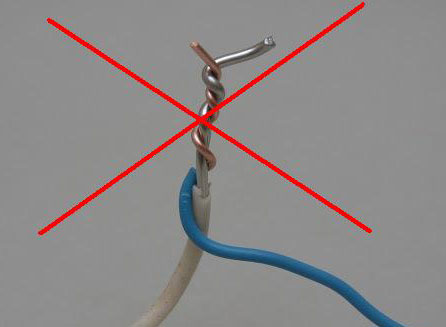
Ways to connect different wires
How to connect copper and aluminum wires:
- with the use of another metal;
- preventing the appearance of harmful oxide plaque.
In the second case, special compositions are used that can protect the metal from the effects of moisture and oxidation. The pastes prevent the destruction of the connection. Another method of fire protection is tinning. Tinned multicore cable can be twisted with a single core aluminum cable. Special appliances are also used for making connections:
- Clamps. Used to connect to an aluminum riser in the access panel. Tapping clips have a puncture or no puncture. The device is equipped with an intermediate plate that eliminates contact between the two metals. Some terminals are treated with paste. Sometimes there is no need to use special compounds.
- Spring-loaded and self-clamping terminals. Wires of different metals can be joined and spliced together using terminals that have sockets and baffle plates that separate the aluminum conductors from the copper ones.
- Bolts. When making a bolted connection, a stainless steel or galvanized steel washer is placed between the wires.
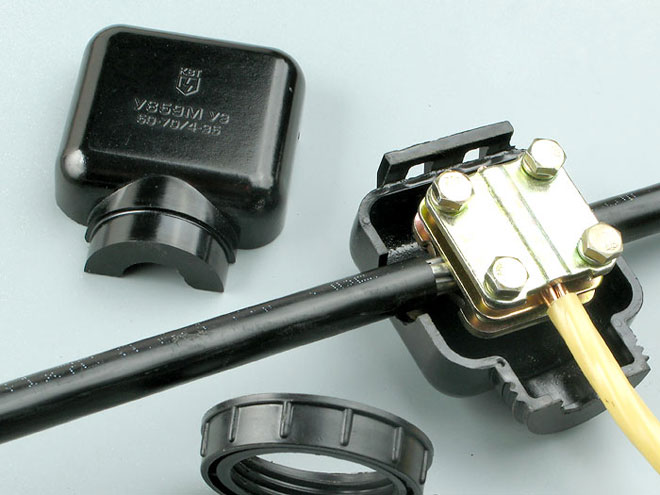
Terminal Blocks
Terminal blocks can be:
- Disposable. Used when connecting wires in junction boxes and installing chandeliers. You have to exert force to insert the wires into the opening of the device. Even greater difficulty is the removal of the cable from the pad.
- Reusable. There is a lever for fixation, thanks to which the cable can be inserted and removed several times. This type of block is used when multiple conductors of different metals are connected. If the work is performed incorrectly, the connection can be redone.
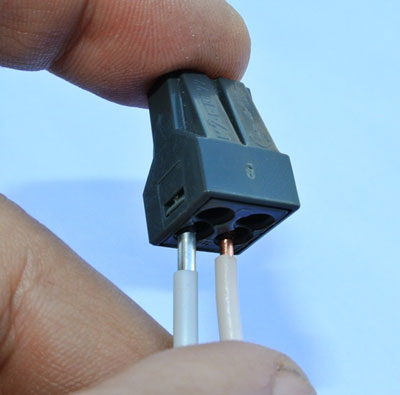
Installation is performed as follows:
- the cable is cleaned from the insulation coating;
- The cores are stripped to a metallic sheen;
- the lever on the reusable terminal block is lifted;
- the cleaned part of the wire is inserted into the hole of the terminal block up to the stop;
- the lever returns to its original position.
Crimping
In this case, tubular sleeves are used to securely and safely fasten the wiring elements. A press, mechanical, hydraulic or electrical pliers will be required to connect the cables. Installation includes:
- selecting the sleeve and adjusting the tool;
- cleaning of wires from the braid;
- stripping the cores (this is done by using sandpaper);
- applying of quartz-vaseline compound;
- insertion of cable ends into the rivet;
- Crimping (with a simple tool you make several crimps over a short distance, with a good tool you make one crimping);
- Insulating the joints.
Wires are inserted into the sleeve from opposite sides so that the joint is in the middle of the connector. The conductors can be inserted from one side. The sleeve connection is sometimes replaced by the use of nut clamps, but the latter are less reliable. Over time, the rivet will become loose, increasing the risk of fire.
Bolted connection
If the installation rules are followed, the method provides a long-lasting attachment. The work will require 2 plain washers, 1 spring washer, a nut and a bolt. Wires are cleaned of insulating material. The spring washer is put on the bolt, which is inserted into the simple washer. The end of the aluminum cable is rolled up with a ring, which is thrown over the bolt. After that a washer is put on and a nut is screwed on. Coat the stranded wire with solder before you start.
Soldering
This is a reliable and technologically advanced method that provides a quality connection. Before soldering, the cores are cleaned of braid and oxide film. If necessary, the cables are tinned, loosely stranded, fluxed, and soldered. Do not join aluminum and copper wire using acid flux. The compound destroys the metals, reducing the strength of the attachment. Insulate the joint in the usual way.
Peculiarities of connecting wires outdoors
When performing work on the street, take into account the fact that the wires will be affected by atmospheric precipitation, high and low temperatures, wind. Therefore, when performing installation work, sealed structures, insensitive to ultraviolet radiation and high humidity are used. When connecting wires on roofs, facades and poles, piercing clips are used.
Related articles:
